Choosing the right crash reporting tool can save you time, improve app stability, and keep users happy. Here’s a quick breakdown to help you decide:
- Free Tools: Great for small projects. Examples include Firebase Crashlytics (real-time crash reporting) and UXCam (session replay for up to 10,000 sessions).
- Paid Tools: Offer advanced features like detailed analytics, customizable dashboards, and better integration. Examples: Sentry ($26/month), Bugsnag ($59/month), and enterprise options like AppDynamics ($3,300/year).
- Key Factors to Consider: Budget, scalability, integration with your tools, and data retention needs.
Quick Comparison
| Tool Type | Starting Price | Key Features | Best For |
|---|---|---|---|
| Free (Firebase) | Free | Real-time crash reporting | Small teams/projects |
| Mid-tier (Sentry) | $26/month | Advanced error tracking, integrations | Growing apps |
| Enterprise (AppDynamics) | $3,300/year | Detailed analytics, compliance | Large-scale apps |
Start with free tools for basic needs, and upgrade to paid options as your app scales or requires advanced capabilities.
Sentry vs Crashlytics: Deep Dive & Live Demo
1. Free Tools Analysis
Free crash reporting tools are a great starting point for developers on a budget. However, as projects grow, their limitations may push teams to explore paid options for more advanced features.
Firebase Crashlytics is part of Google’s Firebase suite and provides real-time crash reporting. It prioritizes crashes based on user impact, making it a strong choice for teams already using Firebase. Features include stack trace analysis, device state monitoring, and tracking user actions leading up to crashes [2].
UXCam offers a free tier that supports up to 10,000 monthly sessions. It links crash reports to user sessions, giving teams the context needed to quickly resolve issues impacting the user experience [1].
Here’s a quick comparison of popular free crash reporting tools and their limitations:
| Tool | Free Tier Limits | Key Features | Best For |
|---|---|---|---|
| Firebase Crashlytics | Unlimited | Real-time crash reporting, stack trace analysis | Teams using Firebase |
| UXCam | 10,000 monthly sessions | Session replay, crash-to-session matching | Mobile-first teams |
| Rollbar | 5,000 monthly events | Automated error grouping, custom workflows | Small development teams |
| Instabug | Basic crash reporting | User experience recording, bug reports | Early-stage apps |
Rollbar offers a free plan capped at 5,000 monthly events, featuring automated error grouping and custom workflows, which are ideal for smaller teams. Instabug provides crash insights and user experience recording, but its free tier lacks alerting features, which are only available in paid plans starting at $100/month [1].
For industries like healthcare or medtech, where data security and compliance are critical, the limitations of free tools can be a concern. Free plans often don’t include the security features or certifications required for sensitive applications.
When choosing a free crash reporting tool, keep these factors in mind:
- Ease of integration: Tools like Bugsee simplify setup with single-line code implementation [1][2].
- Scalability: Look for tools with upgrade options as your app grows.
- Platform compatibility: Make sure the tool works with your development stack.
- Data retention: Check how long crash data is stored.
While free tools cover the basics, paid solutions often provide the advanced features and flexibility needed for larger or more specialized projects.
2. Paid Tools Analysis
Free tools are great for basic crash reporting, but paid options bring advanced features that are critical for managing and improving enterprise-level applications.
Raygun offers a plan at $40/month that includes a customizable dashboard and tools for crash segmentation, helping you dive into specific diagnostics [4]. It’s especially strong in breaking down crash data across different user groups.
Rollbar starts at $12.50/month with a tiered pricing model. It provides custom workflows and scalable integrations. One standout feature is its automated error grouping, which helps teams quickly spot and address the most pressing issues [3].
Sentry stands out with its broad framework support and Application Performance Monitoring (APM) capabilities. It delivers real-time error tracking, performance monitoring, advanced debugging tools, and customizable alerts – perfect for handling complex applications [3].
For industries like healthcare and medtech, UXCam offers enterprise-level security and compliance certifications. Its paid plans include session replay linked to crash reports, giving developers a clear view of user interactions during issues [1].
Bugsee integrates seamlessly with tools like Jira, Slack, and Trello, making workflow automation easier for development teams [1].
Key Considerations for Paid Tools
When choosing a paid crash reporting tool, focus on these factors:
- Data retention and compliance: Ensure the tool meets your data security and regulatory needs.
- Integration: Check how well it works with your current development tools.
- Scalability: Look at how pricing adjusts as your app and user base grow.
- Support: Evaluate the level of technical support offered.
- Real-time alerts and customization: Consider how alerts can be tailored to your team’s needs.
Some providers also offer personalized setup help and ongoing support, which can be invaluable for complex apps or strict compliance requirements.
Paid tools often save time by reducing debugging efforts and improving app stability. While free tools handle the basics, paid options give you deeper insights and more control – essential for scaling enterprise applications.
Next, we’ll dive into a cost-effectiveness comparison to help you choose the best option for your needs.
sbb-itb-7af2948
Cost vs. Feature Comparison
When evaluating crash reporting tools, the balance between cost and features can vary widely. Here’s a breakdown to guide your decision-making process.
Feature Comparison Across Tiers
| Feature Category | Free Tools | Entry-Level Paid | Enterprise Paid |
|---|---|---|---|
| Price Range | Free | $12-40/month | Custom Pricing |
| Best For | Small Projects | Growing Apps | Large-Scale Apps |
| Data Retention | 30 days | 90 days | 180+ days |
| Real-time Alerts | Basic | Advanced | Custom Rules |
| Integrations | Limited | Multiple | Enterprise-Wide |
| Error Grouping | Basic | Advanced | Custom Rules |
| Support Level | Community | Email/Chat | Dedicated Team |
| Key Benefits | Basic Analytics | Team Workflows | Advanced Diagnostics |
Enterprise-Level Benefits
For industries like healthcare and medtech, enterprise-grade tools deliver critical features for handling large-scale applications. These include advanced security measures, compliance certifications, and scalable infrastructure designed to meet the demands of growing user bases [5].
Why Integrations Matter
Free tools cover the basics, but paid tools shine when it comes to integrations. For example, platforms like Instabug integrate seamlessly with Jira and Asana, enabling teams to track bugs and resolve them efficiently [1]. These integrations can save time and improve team productivity.
Security and Data Privacy
For organizations managing sensitive information, self-hosted options like Bugsink offer better control over data and infrastructure. This is especially beneficial for industries with strict compliance requirements, though these solutions may demand more technical resources [5].
Smart Cost Strategies
- Use free tools for small projects or MVPs.
- Upgrade to paid plans when advanced features like diagnostics are needed.
- Opt for self-hosted solutions if data privacy is a priority.
- Weigh integration benefits to enhance team workflows.
- Adjust pricing tiers as your user base and feature needs grow.
With this breakdown, you can better identify which tools align with your development goals and budget.
Recommendations
Different industries face unique challenges, so it’s important to select tools that align with their specific needs. Below are tailored suggestions based on project size and industry demands:
For Small to Growing Projects
- Firebase Crashlytics: A reliable choice for basic crash reporting needs.
- UXCam: Great for mobile-focused features like session replay.
- Sentry ($26/month): Offers strong value for scaling teams, especially with workflow automation.
- Bugsnag ($59/month): Ideal for detailed error tracking in growing applications.
For Enterprise Applications
- Raygun ($40/month per 10,000 events): A solid option for large-scale apps needing advanced diagnostics.
- BugSplat (Business plan): Provides extended data retention for up to six months.
Industry-Specific Recommendations
Here’s a quick guide to tools best suited for specific industries:
| Industry | Recommended Tool |
|---|---|
| Healthcare | Raygun – Strong security and regulatory compliance. |
| Mobile Games | Bugsnag – Real-time monitoring. |
| Enterprise Apps | BugSplat – Long-term data retention. |
| IoT Applications | Sentry – Links device data effectively. |
Key Factors to Consider
When choosing a tool, keep these important criteria in mind:
- Project Requirements: Match the tool to your project’s size, budget, and needs. Free options are often sufficient for projects with up to 10,000 monthly active users, but larger projects may require paid solutions.
- Technical Integration: Opt for tools that work seamlessly with your current development stack and integrate with platforms like Jira or Trello.
As your project evolves, reassess your tool’s performance regularly. Start with free options like Firebase Crashlytics, and upgrade to paid tools as your needs expand.
FAQs
What is the difference between Firebase and Sentry?
Firebase Crashlytics is a free crash reporting tool ideal for small teams or solo developers, while Sentry starts at $26/month and provides advanced error tracking, performance monitoring, and workflow customization for growing organizations.
| Feature | Firebase Crashlytics | Sentry |
|---|---|---|
| Target Users | Hobbyists, small teams | Scaling teams, enterprises |
| Integration | Easy setup within Firebase suite | Wide support for web, mobile, and server-side frameworks |
| Pricing Model | Free Spark plan, usage-based Blaze plan | Starts at $26/month (Team plan) |
| Performance Monitoring | Basic crash reporting | Detailed insights and advanced monitoring |
| User Interface | Simple dashboard | Rich, feature-packed dashboard |
| Cross-platform Support | Android, iOS, macOS | Broad platform and framework support |
Firebase’s free tier is perfect for small-scale projects, offering basic crash reporting and seamless integration with the Firebase ecosystem. On the other hand, Sentry caters to organizations that need more robust features, such as:
- In-depth error tracking, pinpointing issues down to the exact line of code
- Comprehensive analytics tools for better decision-making
- Advanced performance monitoring to identify bottlenecks
- Customizable workflows to better fit team processes
"Firebase Crashlytics may suit the needs of hobbyists, solopreneurs, and small teams. Sentry, on the other hand, is a better solution for growing teams that need deeper context and insights into solving crashes and errors." – TrustRadius User Review
For teams already using Firebase, Crashlytics offers straightforward integration and covers basic needs. However, as applications grow in scale and complexity, Sentry’s extensive capabilities make it a strong choice for teams looking to dive deeper into diagnosing and resolving issues.
Choosing between these tools depends on your current needs and how you anticipate scaling in the future.

